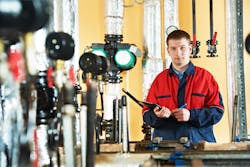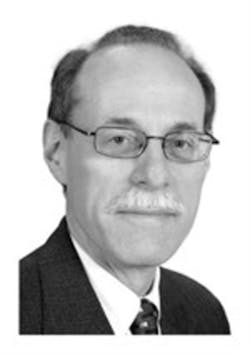Application Corner: Using principles to calculate boiler efficiency
Previously discussed was the use of tables to determine boiler combustion efficiency. This approach is limited to a given fuel and is based on the excess oxygen and temperature rise above ambient conditions. Many factors can reduce the accuracy of the tables and often render them useless, so first, principles may have to be applied to calculate boiler efficiency. Boiler efficiency can be defined as the energy content of the steam produced divided by the amount of energy consumed to produce the steam. This might appear to be straightforward, but it is not necessarily an easy task.
Calculating the energy consumed typically requires a fuel flow measurement that (for gaseous fuels) is often compensated for the operating temperature and operating pressure of the gas. The energy content of multiple fuel streams must be added to obtain the total energy consumed, especially when multiple fuels are fired at the same time. The energy content of the steam can be measured with a steam flowmeter that is usually compensated for pressure and sometimes temperature (especially for superheated steam).
The calculated boiler efficiency based on actual process measurements (performed manually or continuously) can be used as a gauge to determine how well the boiler is operating. The start of a decreasing efficiency trend could be used as an early warning to investigate the problem before the boiler becomes inefficient or fails. To increase the confidence in the steam flow measurement, steam flow measurements should be periodically compared to feedwater flow measurements to ensure that they maintain the same ratio, which is largely dependent on the type of water treatment system and controls.
More next month.
David W. Spitzer is a regular contributor to Flow Control magazine and a principal in Spitzer and Boyes LLC, which offers engineering, seminars, strategic, marketing consulting, distribution consulting and expert witness services for manufacturing and automation companies. Spitzer and Boyes is also the publisher of the Industrial Automation INSIDER. He has more than 40 years of experience and has written more than 10 books and 350 articles about flow measurement, instrumentation and process control.
Spitzer may be reached at 845-623-1830 or via spitzerandboyes.com. Click on the "Products" tab to find his Consumer Guides to various flow and level measurement technologies.
About the Author
David W. Spitzer
David W Spitzer’s new book Global Climate Change: A Clear Explanation and Pathway to Mitigation (Amazon.com) adds to his over 500 technical articles and 10 books on flow measurement, instrumentation, process control and variable speed drives. David offers consulting services and keynote speeches, writes/edits white papers, presents seminars, and provides expert witness services at Spitzer and Boyes LLC (spitzerandboyes.com or +1.845.623.1830).

